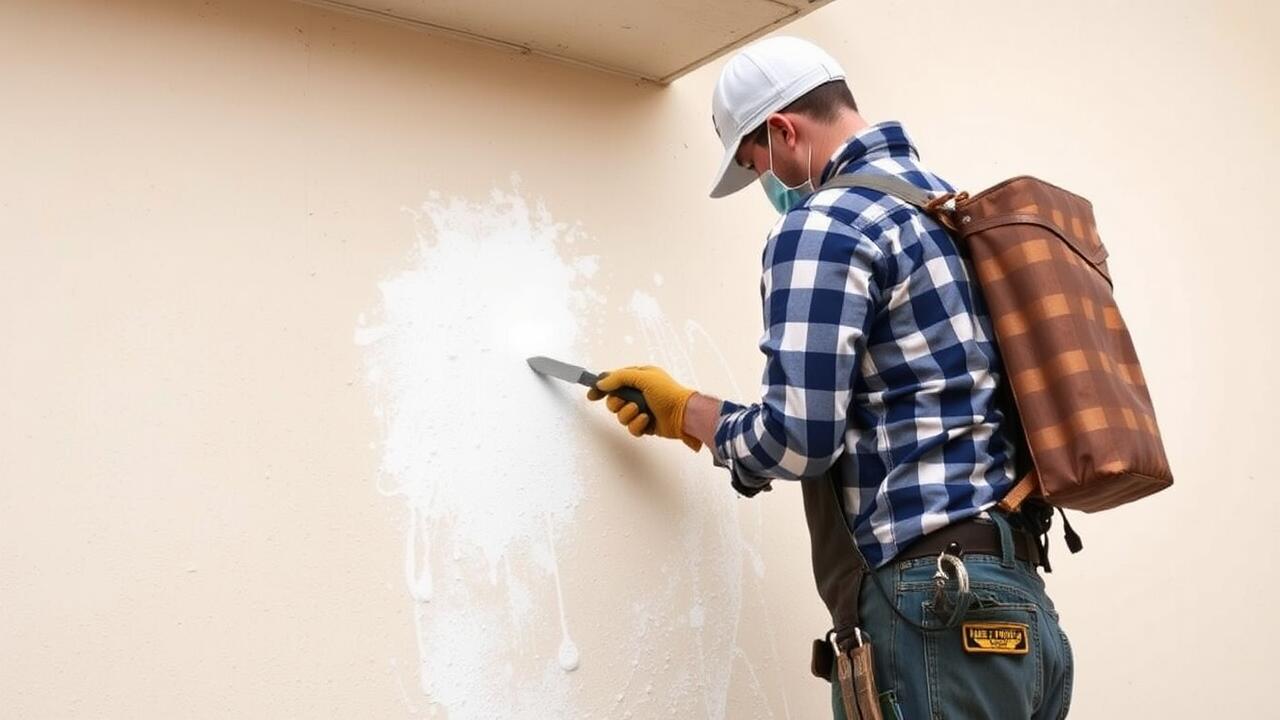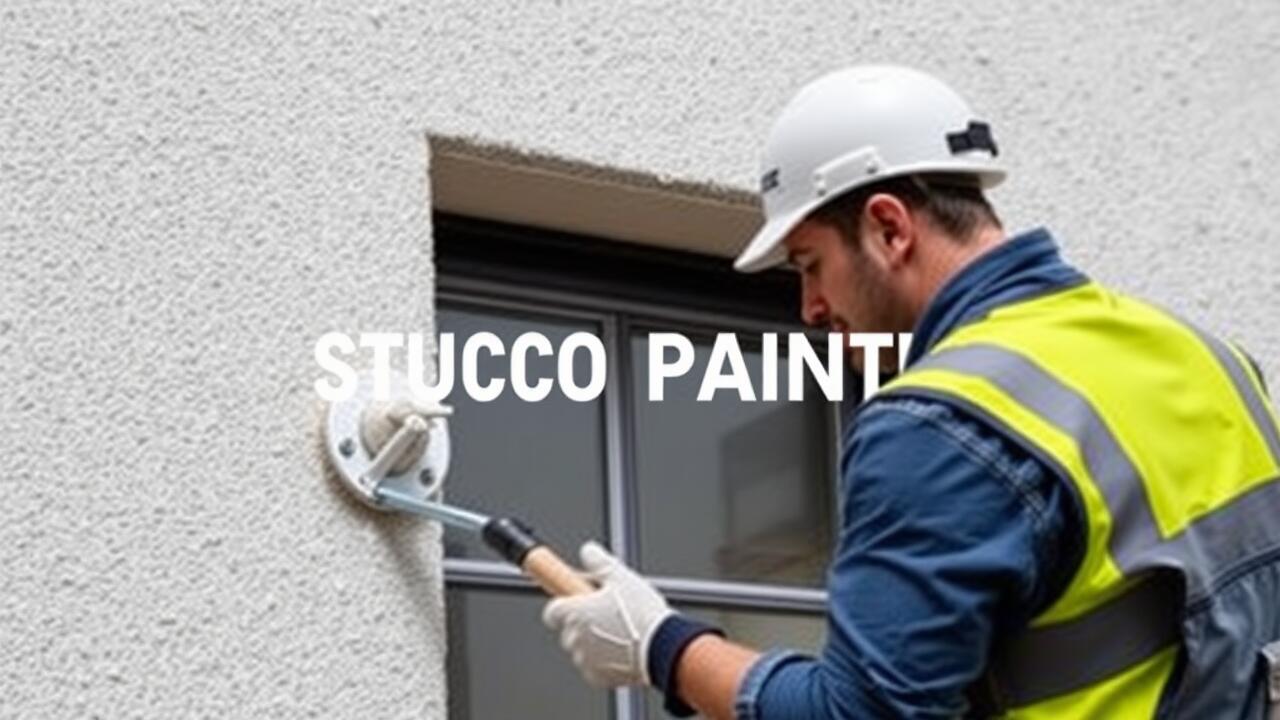
Preparing Stucco for Painting
To ensure a successful paint job on stucco, proper preparation is essential. Start by inspecting the stucco surface for any cracks or damage. Filling these imperfections with a suitable patching compound helps create a smooth base for the paint. Once repairs are made, clean the surface thoroughly. Use a power washer or a stiff brush to remove dirt, dust, and any mold or mildew that may have accumulated. This step is crucial as contaminants can interfere with paint adhesion and longevity.
When preparing for the actual painting process, consider the climate and the time of year. Avoid painting on extremely hot days or during high humidity, as these conditions can affect the drying time and finish. Using a primer specifically designed for stucco can further enhance the durability of the topcoat. For those in the area, seeking services for Stucco Painting in Van Nuys, Los Angeles can provide valuable insights into the local environment and conditions that may impact your painting efforts.
Cleaning and Repairing the Surface
Before applying paint, it is crucial to clean the stucco surface properly. Start by using a pressure washer to remove dirt, mold, and any loose particles. If you notice stubborn stains or mildew, consider using a diluted bleach solution for a thorough clean. Allow the surface to dry completely after washing, as any moisture can impair paint adhesion.
Inspect the stucco for cracks or damage after cleaning. Repair any imperfections with a quality stucco patching compound. Fill in cracks generously and smooth out the surface for a consistent finish. For those looking for professional assistance, services for stucco painting in Van Nuys, Los Angeles, can provide expert expertise in ensuring the surface is adequately prepared before painting.
Application Techniques for Stucco Paint
When applying paint to stucco surfaces, it's important to use a technique that ensures even coverage. A sprayer often provides the best results, allowing for the paint to reach all the textured areas of the stucco. If a sprayer isn't available, a roller can also be effective. Using a long nap roller will help distribute the paint into the crevices, ensuring that no part of the surface is left unpainted. It’s essential to maintain a wet edge as you work to avoid unsightly overlaps and streaks.
Stucco Painting in Van Nuys, Los Angeles, often requires consideration of the unique climate conditions. Application should ideally take place during cool or overcast days to prevent rapid drying, which can lead to poor adhesion. Applying the paint in thin, multiple coats can enhance durability and improve the overall finish. Allow adequate drying time between coats to achieve the best results. Always follow the manufacturer's instructions for drying times and application recommendations to ensure optimal adhesion and longevity.
Best Practices for Even Coverage
Achieving even coverage when painting stucco requires careful attention to technique and workflow. Start by using a high-quality paint designed specifically for stucco surfaces. Rollers with thick nap are ideal for this type of texture, as they can reach into the crevices that flat surfaces might miss. Regularly load the roller to avoid drying out during the application process, which can lead to unevenness. For corners and detailing, a brush may be necessary to ensure that every area gets the paint it needs without leaving gaps.
When engaging in stucco painting in Reseda, Los Angeles, it's important to work in small sections and maintain a wet edge. This technique prevents visible lines from forming as you feather out the paint from each section into the next. Pay attention to the environmental conditions during application; avoid painting under direct sunlight as it can cause the paint to dry too quickly, resulting in streaks and blotches. Utilizing these practices not only enhances the aesthetics of the finish but also contributes to the longevity of the paint job on stucco surfaces.
Maintenance Tips for Painted Stucco
Regular maintenance is crucial for preserving the appearance and durability of painted stucco. Start by inspecting the surface for any signs of damage or wear, such as chipping or cracking. Addressing these issues promptly can prevent further deterioration. Cleaning the walls periodically is also important; use a soft brush and a mild detergent to remove dirt and grime while avoiding abrasive materials that could damage the paint.
When considering professional help, look for specialists in Stucco Painting in Van Nuys, Los Angeles. They can provide recommendations for suitable products and offer guidance on techniques that optimize the longevity of your paint. Additionally, seasonal checks can help maintain the integrity of the paint. This includes reviewing caulking around windows and doors to ensure there are no gaps or leaks. Maintaining these areas will help keep your painted stucco looking fresh and new for many years.
How to Extend the Life of Your Paint
To ensure the longevity of your exterior paint on stucco surfaces, regular inspections are crucial. Check for cracks, peeling, or any signs of wear and tear. Addressing these issues promptly can prevent more significant damage and maintain the integrity of the paint. Additionally, cleaning the stucco periodically helps remove dirt and mildew. A soft-bristle brush and a mild detergent can be effective for this purpose, allowing the paint to adhere properly and resist fading.
For areas exposed to the elements, applying a UV protective sealant can enhance the durability of the paint. This helps safeguard against harsh sunlight and prevents color degradation over time. When considering professional services, look for companies specializing in stucco painting in Van Nuys, Los Angeles, as they will be familiar with the local climate and can recommend the best products and techniques for lasting results. Regular maintenance and attention to detail can significantly extend the life of your painted stucco.
FAQS
What type of paint is best for stucco surfaces?
The best type of paint for stucco surfaces is a high-quality acrylic latex paint, which provides flexibility, breathability, and durability, making it suitable for the porous nature of stucco.
How should I prepare stucco before painting?
Preparing stucco for painting involves cleaning the surface to remove dirt and debris, repairing any cracks or damage, and allowing it to dry completely before applying paint.
Can I use regular exterior paint on stucco?
While you can use regular exterior paint on stucco, it is highly recommended to use paint specifically formulated for stucco to ensure proper adhesion and longevity.
How often should I repaint stucco?
It is generally recommended to repaint stucco every 5 to 10 years, depending on environmental conditions and the quality of the previous paint job.
What maintenance tips can help extend the life of painted stucco?
To extend the life of painted stucco, regularly inspect for signs of wear or damage, clean the surface to prevent mold and mildew, and address any repairs promptly to prevent further deterioration.
